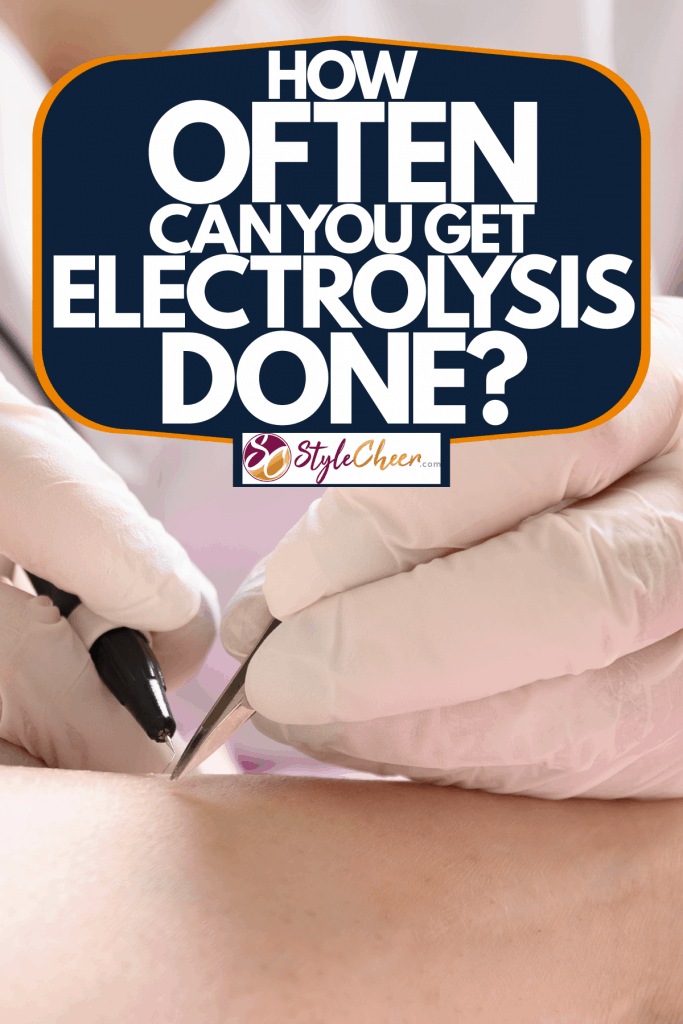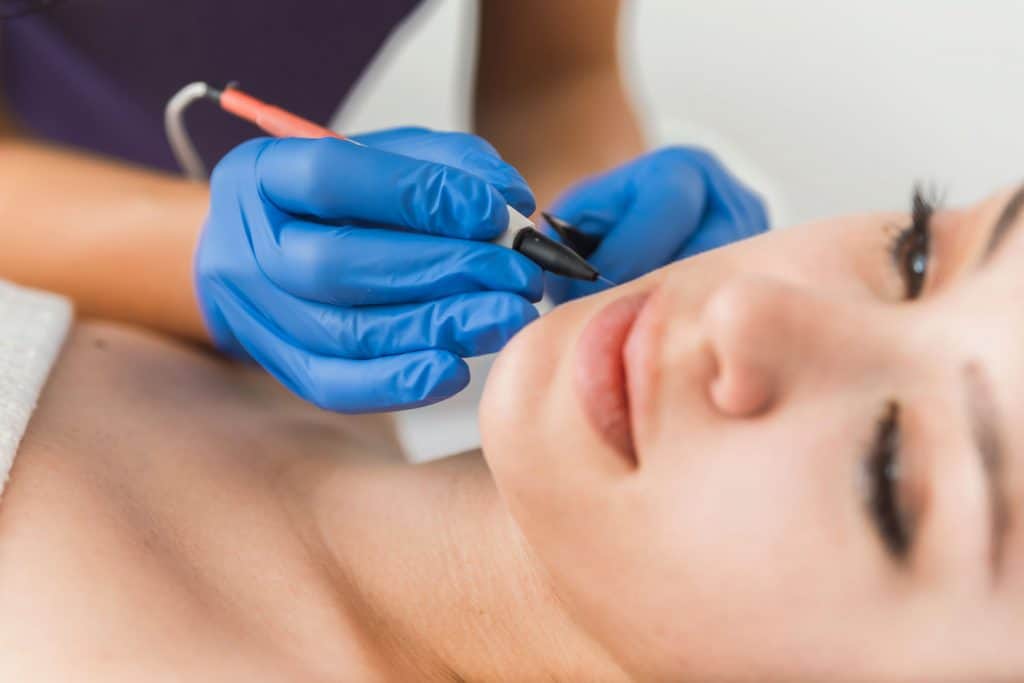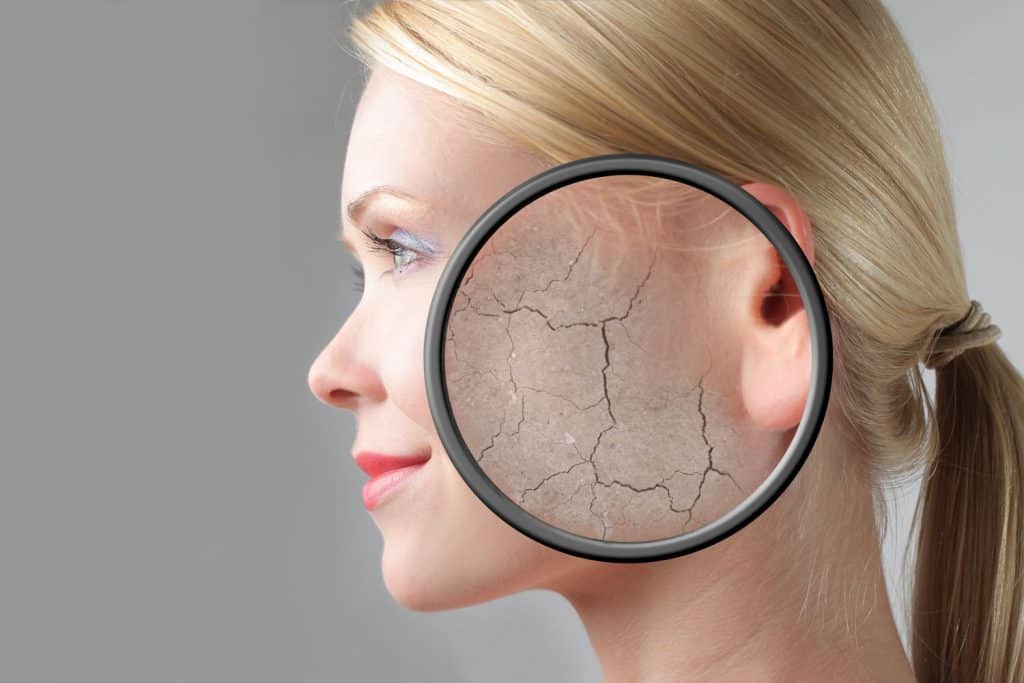Electrolysis is a popular and effective method of permanently removing hair follicles from an area of the body, eliminating the need for shaving or waxing. The process is completed over a series of regularly scheduled sessions with an electrologist, which can mean a matter of months before hair growth is stopped. But how frequently can these sessions be done? We've gathered all the information you'll need, so read on to find out what to expect from your electrolysis treatments.
Most people can have electrolysis hair removal performed weekly. At a minimum, three days of hair growth should be allowed before visiting your electrologist, as the hairs must be long enough for the electrologist to grasp with a tweezer-like instrument. The more hair is present on the day of your treatment, the better your electrologist can estimate the length of treatment needed to permanently remove the hair follicles. Allowing a week between electrolysis appointments provides sufficient time for the hair to regrow and your skin to recover from the previous treatment.
Since everyone's hair and skin are different, it's important to know how yours may be affected by electrolysis hair removal. What will your skin look and feel like after the treatment? What precautions should you take before your electrolysis appointment, and what sort of aftercare will your skin need? How can you know the treatments are effective? Read on to learn the answers to these questions and more.

This article may include affiliate links and elements that were carefully created by our team using advanced ai to help you envision the best style advice.
How Do You Know If Electrolysis Is Working?
Since the hair follicles treated during your electrolysis session may still regrow hairs, you might worry that the treatment has not been effective. While electrolysis may not end the hair growth from a follicle in a single treatment, you will see the hairs grow back finer and thinner until they stop regrowth altogether. You can be sure your electrolysis appointments are bearing fruit when you start to see finer hairs regrow in the areas targeted by your electrologist.
Hair growth from a follicle is fed by a tiny capillary called the papilla. Electrolysis targets this capillary with a small electrical current supplied by a very fine needle. Each time a current is applied to this capillary, the blood supply to the hair is reduced until the supply is cut off and the hair ceases growing for good. Don't be discouraged when you see hairs growing back from follicles that have already been treated because they will grow back thinner until they stop growing back at all.

Can You Pluck Hair After Electrolysis?
It's best to avoid plucking hairs after your electrolysis treatment since this will interrupt the hair growth cycle. Hairs targeted during your appointment will have been removed already, so any hairs left to pluck will be from follicles that have not had the treatment applied to them. Leaving these follicles undisturbed is important for ensuring your electrologist can target them effectively.
Shaving unwanted hairs between treatments can be an acceptable alternative to tweezing. However, you should allow at least three days of hair growth in the targeted area before your appointment, meaning shaving hair during this period is something you should take care to avoid. That's because your electrologist must be able to find and grasp the hairs with a tweezer-like instrument before the electrical current can be applied to the follicle.
How Long After Electrolysis Can You Shave?
Avoid using any temporary hair removal methods - including shaving - for one to two days following your treatment. Your skin will be more sensitive during those days, and your hair follicles will be open, meaning bacteria can enter them more easily. You'll want to use your electrologist's recommended skincare treatment and avoid rubbing or scratching the treated area within 24 hours following the procedure.
When shaving the treated area, be careful to avoid disturbing any scabs that have formed. Scabbing is a normal part of the post-electrolysis healing that your skin will go through, so don't pick at them or try to remove them. Disturbing the healing tissue increases the chances of infections and scarring.
Does Electrolysis Ruin Your Skin?

The most common side effects of electrolysis - such as redness, swelling and scabbing - are temporary and will be healed with the proper aftercare regimen, as prescribed by your electrologist. However, the possibility of long-term damage to your skin does exist, especially if the electrolysis is performed improperly or the proper aftercare steps are not followed.
These risks are greatly reduced by choosing an electrologist who is experienced and knowledgeable. They will know the appropriate level of electrical current to apply to your hair follicles to perform the treatment effectively without causing cumulative damage to the subsurface tissue. They will also recommend an aftercare skin treatment that will minimize the possibility of long-term skin damage. For these reasons, be sure to choose an electrologist who has a long history of satisfied clients with positive testimonials.
For more details on the possible side effects that may be caused by electrolysis hair removal, click this link to read advice from electrolysis professionals.
How Long Do Bumps From Electrolysis Last?
It's not unusual for your skin to form small scabs or even blisters following an electrolysis treatment. Scabbing is the normal process by which your skin heals itself, and leaving those scabs undisturbed is important for your skin's health and appearance. Depending on the individual, scabs may take between seven and 21 days of healing before they naturally fall off the skin. Gently washing the scabbed skin can help with the healing process and prevent infection.
Small acne-like blisters may appear on your skin following electrolysis. They may simply fade in a few days' time, or they may scab over as they heal. Do not pick at these lesions, as this can cause pitting of the skin which can turn into scarring. You may apply a warm compress to your skin following an electrolysis treatment to help prevent these blisters from forming and be sure to gently clean the area according to your electrologist's skin aftercare recommendations.
Some electrologists recommend using a small amount of skin cleanser with salicylic acid to help dry out these blisters after they appear. For more information on these skin cleansers, check out this article where we answer the question, "Do Salicylic Acid Cleansers Work?"
How Do I Calm My Skin After Electrolysis?
Your skin is likely to feel some discomfort after electrolysis, similar to the feeling of a sunburn. This is normal, but there are ways to reduce redness and swelling. Follow the aftercare instructions provided by your electrologist and supplement them with the following tips as needed.
Your electrologist may apply witch hazel and aloe vera after your session, which will help calm the discomfort. You may also wish to apply a topical painkiller with 2% lidocaine. Apply a cold compress to minimize swelling. Avoid exposing the treated skin to prolonged sunlight for 72 hours following the treatment, and if you must be in the sun, apply sunscreen with 30 SPF or stronger.
Do not rub or scratch the treated area since the hair follicles will be more prone to bacterial infection within the 24 hours following treatment. Avoid using alcohol-based products such as perfume on the treated area since this can burn and irritate the exposed pores. Refrain from applying makeup, deodorant, or other products that can clog the pores in the treated area.
To learn more about how to treat different types of skin reactions following your electrolysis appointment, seek advice for skincare from electrolysis professionals.
The Final Word
Electrolysis hair removal treatments are an effective and safe method of permanently stopping hair growth on targeted areas of your body. The process will span several months and may take up to a year to complete the full course of treatments. For most people, scheduling weekly electrolysis treatments can be ideal, as this allows enough time for hair regrowth while shortening the overall time needed to complete the full course of treatments.
Allow at least three days of hair growth before your electrolysis treatment so your electrologist can target the maximum number of hair follicles, and avoid plucking hairs between treatments as this will interrupt the hair's growth cycle. Don't pick at scabs or blisters that appear after treatment - these are a normal part of your skin's healing process, and should be gently cleaned with a skin cleanser but otherwise left undisturbed. It's important to follow your electrologist's guidelines for skin aftercare following your electrolysis treatment in order to reduce the possibility of skin pitting or scarring.
Using a skin cleanser can be an important step in keeping your skin bright and unblemished. Check out this article for "A Guide On How Much Cleanser To Use."

![Scientist holding Cyanoacrylate glue, Is There An Eyelash Glue Without Cyanoacrylate? [A Guide to Finding Safe Alternatives] - 1600x900](https://stylecheer.com/wp-content/uploads/2023/09/shutterstock_2238414685-300x169.jpg)
![Applying lash glue onto fake eyelashes, Why Is My Lash Glue Not Sticking? [Common Reasons and Solutions] - 1600x900](https://stylecheer.com/wp-content/uploads/2023/09/shutterstock_1059533828-300x169.jpg)
![Pouring black lash glue onto a small mat, What Glue Do Lash Techs Use? [A Guide to Lash Extension Adhesives] - 1600x900](https://stylecheer.com/wp-content/uploads/2023/09/shutterstock_1541038103-300x169.jpg)